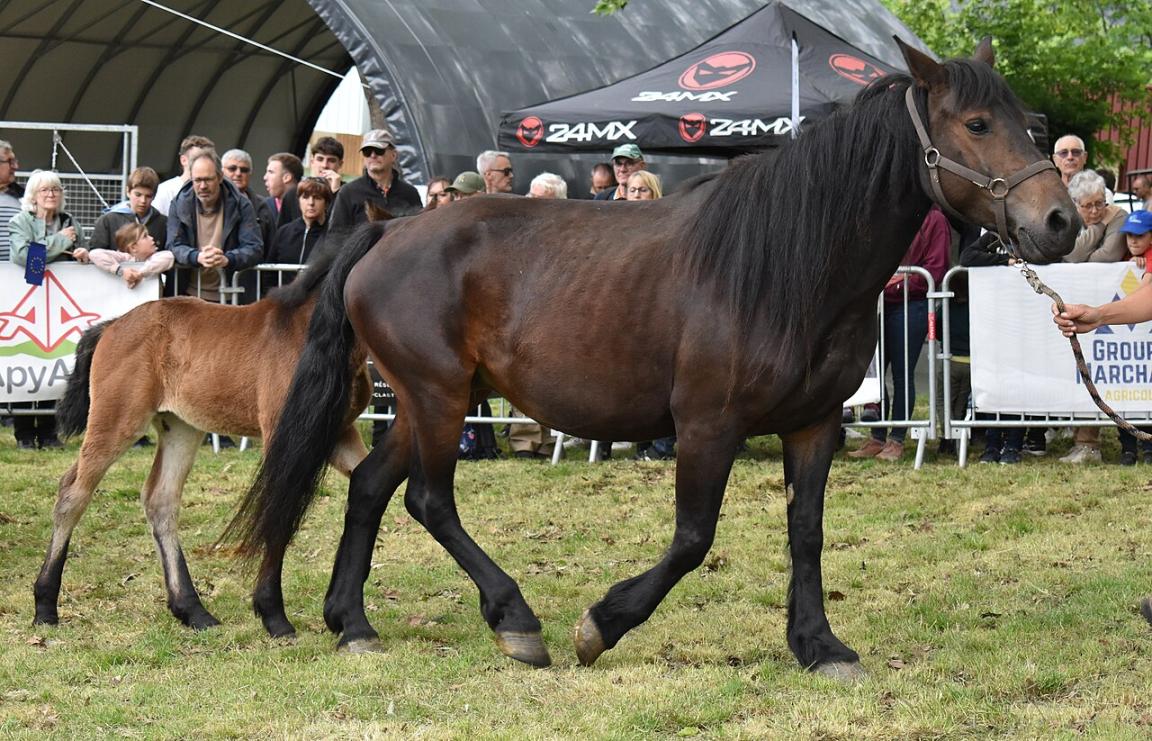
Continent: Europe
Country: France
Weight: 400 – 500 kg
Height: 135 – 155 cm
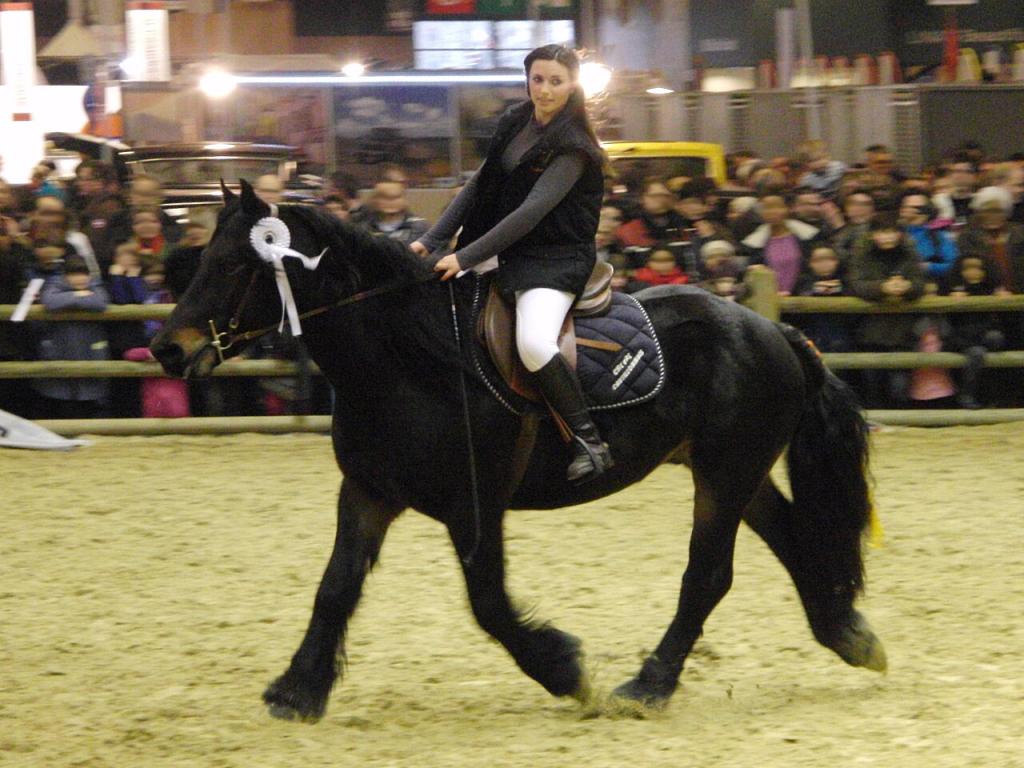
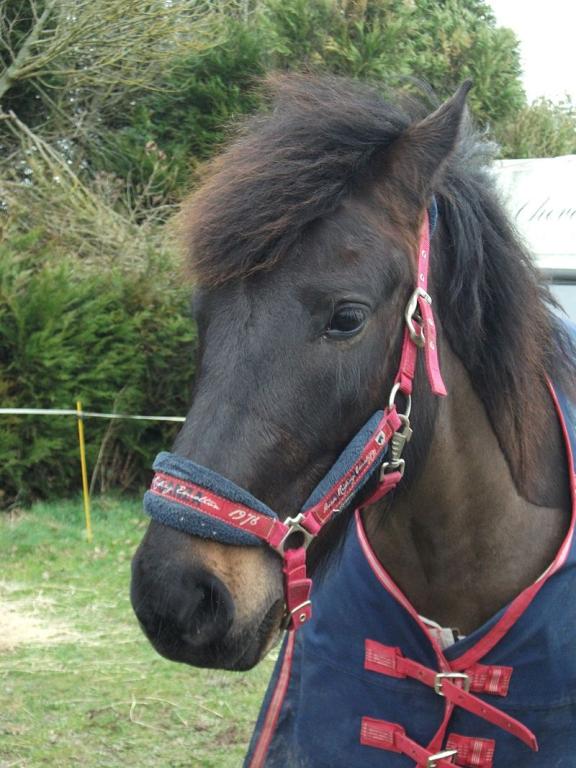
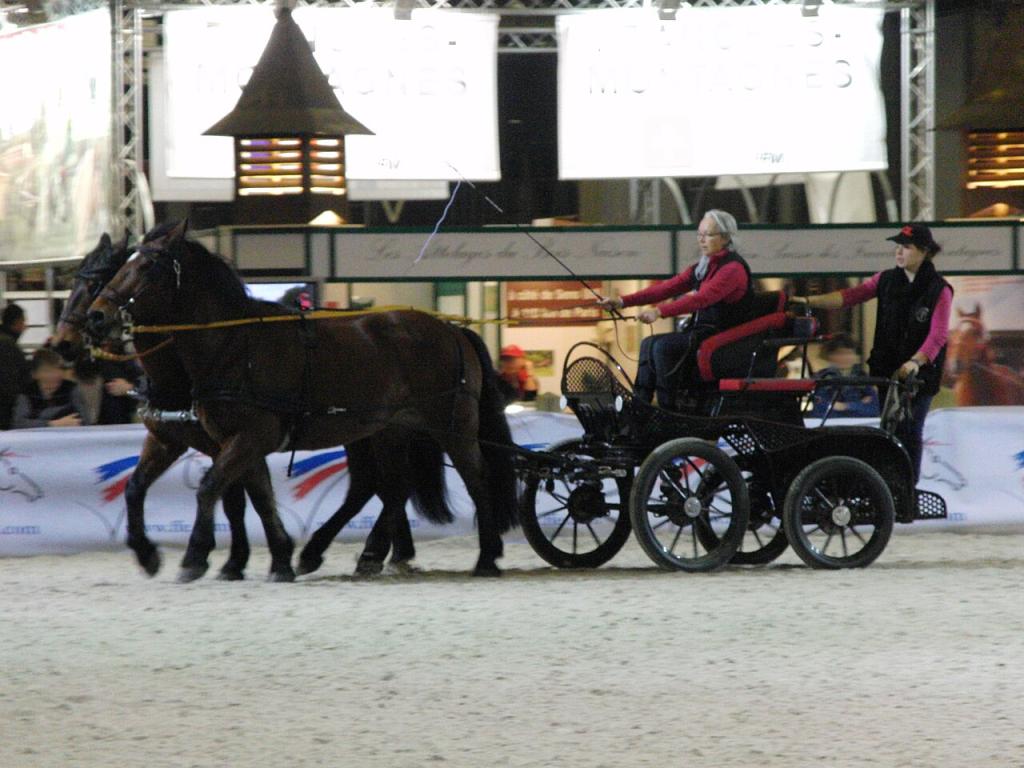
The Castillonnais horse is a rustic breed originating from the southwest of the Ariège department, in the French Pyrenees, more specifically from the Lez Valley around Castillon-en-Couserans, which gave the breed its name.
This mountain horse shares its origins with other Pyrenean breeds such as the Mérens, Pottok, and Landais, and likely descends from ancient wild horses depicted in the cave paintings of Niaux.
According to local tradition, the breed was influenced in the 17th century by horses brought from Greece by a legendary figure named Jouanissou, who returned to the valley with oriental mares.
Historically, the Castillonnais was also known as the Biros horse or Saint-Gironnais. It was used for centuries in rural work, light cavalry, and pulling stagecoaches.
The breed nearly disappeared in the 20th century, but was saved by a group of enthusiasts in the 1980s. It was officially recognized by the French Ministry of Agriculture in 1996, and its stud-book is managed by the ANCCAP (National Association of the Castillonnais Horse of Ariège-Pyrenees).
The Castillonnais is a local mountain breed, deeply rooted in the southwest of Ariège, at the heart of the French Pyrenees. Its original cradle is the Lez Valley, around Castillon-en-Couserans, from which it takes its name.
Breeding is mainly concentrated in the Occitanie region, particularly in:
– Ariège (historic cradle)
– Haute-Garonne (adjacent expansion areas)
A few dedicated breeders have also established herds in other parts of France, such as Brittany and Provence, driven by a desire to help preserve the breed.
Castillonnais horses are traditionally raised in mountain pastures (estive), living freely in high-altitude grazing lands during the summer. This extensive breeding method shapes their hardiness and natural adaptation to outdoor life. The breed is recognized with the "Mountain" label, acknowledging its origins and specific breeding conditions.
The Castillonnais horse represents a unique local genetic heritage in the French Pyrenees. As a native breed with limited numbers, it plays a crucial role in preserving equine biodiversity and traditional mountain traits.
Descended from an ancient genetic base shared with the Mérens and enriched with Iberian and Oriental blood, the Castillonnais carries rare qualities: frugality, hardiness, endurance, and aptitude for high-altitude work. Its harmonious conformation and gentle nature are also appreciated for leisure riding and driving.
Due to its small population, the breed is monitored under anti-inbreeding programs, supported by INRAE and the National Stud of Tarbes.
It is also eligible for endangered breed subsidies (PRME) and benefits from enhanced zootechnical supervision. Maintaining this breed contributes to the genetic diversity of mountain horses in both France and Europe.
Ancient Origins :
The Castillonnais horse has its roots in the Ariège mountains, in the southwest of France. It is closely related to the Mérens, Pottok, and other Pyrenean breeds. These horses likely descend from prehistoric equine populations, as depicted in the cave paintings of Niaux.
Legend and Oriental Influence :
According to local legend, a merchant named Jouanissou brought robust horses from Greece to the Bethmale valley in the 17th century. This popular tale explains the supposed origin of some physical traits and the local traditional dress. Iberian and Oriental influences have also shaped the Castillonnais, giving it a fine silky coat, dished profile, and noble bearing.
A Mountain Workhorse :
Formerly known as the Biros horse or Saint-Gironnais, it was used in light cavalry, stagecoach pulling, and mountain farming. Its frugality, sure-footedness, and endurance built its reputation. As early as the 19th century, authors like Jules Trousset praised its value for cavalry regiments.
Decline in the 20th Century :
The advent of mechanization and rural exodus led to a dramatic drop in numbers. Unlike the Mérens, the Castillonnais lacked a structured syndicate to guide its transition. Crossbreeding with heavier horses further endangered the original type.
Rescue by Enthusiasts :
In the 1980s, a few dedicated breeders and Pyrenean heritage lovers initiated a rescue mission. In 1992, they founded the Ariège-Pyrenean Association of the Castillonnais Horse, supported by the National Stud of Tarbes, Ariège County Council, and the Midi-Pyrénées Region.
Official Recognition :
In 1996, the breed was officially recognized as a light horse by the French Ministry of Agriculture, despite having fewer than 50 broodmares. The ANCCAP became the approved breeding organization responsible for the stud-book, and the breed was registered for biodiversity support programs such as the PRME.
The Castillonnais horse is particularly prized for its calm and reliable temperament—essential traits for thriving in mountain environments and working with a diverse public.
Key Character Traits :
– Docile: easy to handle, even by children or beginners
– Even-tempered: keeps its cool in difficult terrain or unpredictable situations
– Willing: shows great work ethic—whether in hand, under saddle, or in harness
– Sociable: well-suited to herd life and regular human contact
– Curious and intelligent: learns quickly and adapts well to new situations
Additional Behavioral Aspects :
It retains a strong survival instinct, shaped by its adaptation to the Pyrenees—sure footing and terrain awareness.
Its bond with humans is reinforced by traditional extensive breeding methods, which involve daily contact and gentle handling.
It boasts high versatility, thriving at altitude or lowland, in activities such as trail riding, driving, or equine therapy.
"The Castillonnais horse stands out for its balanced, docile, and willing nature combining mountain sure-footedness with high adaptability to diverse uses."
The Castillonnais breed has experienced a gradual revival, after nearly going extinct in the 1980s. Thanks to ongoing efforts by the ANCCAP, breeders, and local institutions, the population has grown from about 50 mares in 1996 (at official recognition) to over 850 horses recorded in 2025.
Although still classified as endangered by INRAE, its prospects are promising.
Several key development strategies are in place:
– Genetic reinforcement: Targeted efforts are underway to broaden the gene pool and avoid inbreeding, with support from INRAE and the Tarbes Stud.
– Support for breeders: The breed benefits from agri-environmental subsidies and the PRME program for endangered local breeds.
– Active promotion: The Castillonnais is regularly showcased at national events (e.g., Salon de l’Agriculture, Equestria) and regional heritage centers.
– Diversified use: Its qualities are valued in trail riding, driving, therapy, logging, and rural entertainment.
– Tourism and branding: Integrated into sustainable development and Ariège heritage promotion projects, the Castillonnais acts as an equine ambassador for its region.
With a strategy focused on genetic quality, economic value, and public visibility, the breed’s future shows strong potential—provided sustained and structured support continues.
The Castillonnais is an exceptionally hardy and naturally robust breed, shaped by centuries of selection in mountainous terrain. It has few known predispositions and is recognized for its remarkable longevity.
Health Strengths :
– Excellent resistance to cold, humidity, and climate variations, thanks to a dense coat and solid build
– Strong, well-shaped hooves, rarely affected by laminitis or lameness
– Good fertility and easy foaling, ideal for rustic conditions
– Efficient digestive system, adapted to poor mountain forage
– Robust immune system, enhanced by outdoor living and minimal veterinary intervention
Points of Attention
– Risk of inbreeding due to low population → requires strict pedigree management
– Needs parasite monitoring, especially during summer grazing
– Sensitive to sudden changes in environment or diet when transported or sold
In Summary
The Castillonnais is a healthy, hardy, and low-maintenance horse, as long as its need for movement, outdoor living, and rustic management is respected. Its extensive lifestyle fosters exemplary overall health for an endangered breed.
Born on 01/01/1990
One of the most influential stallions in the reconstitution of the Castillonnais herd during the 1990s.
Used as a breeding sire in several pilot farms across Ariège.
Considered a representative of the original type: rustic, compact, and with excellent bone structure.
Born on 01/01/1995
An emblematic horse, frequently showcased at local agricultural events, especially the Castillon Fair.
Highly appreciated for his exemplary temperament, often used in driving demonstrations and public events.
Born on 01/01/2000
Presented at the Paris International Agricultural Show in the 2000s.
Acted as an official ambassador of the breed, helping to raise national awareness of the Castillonnais horse.
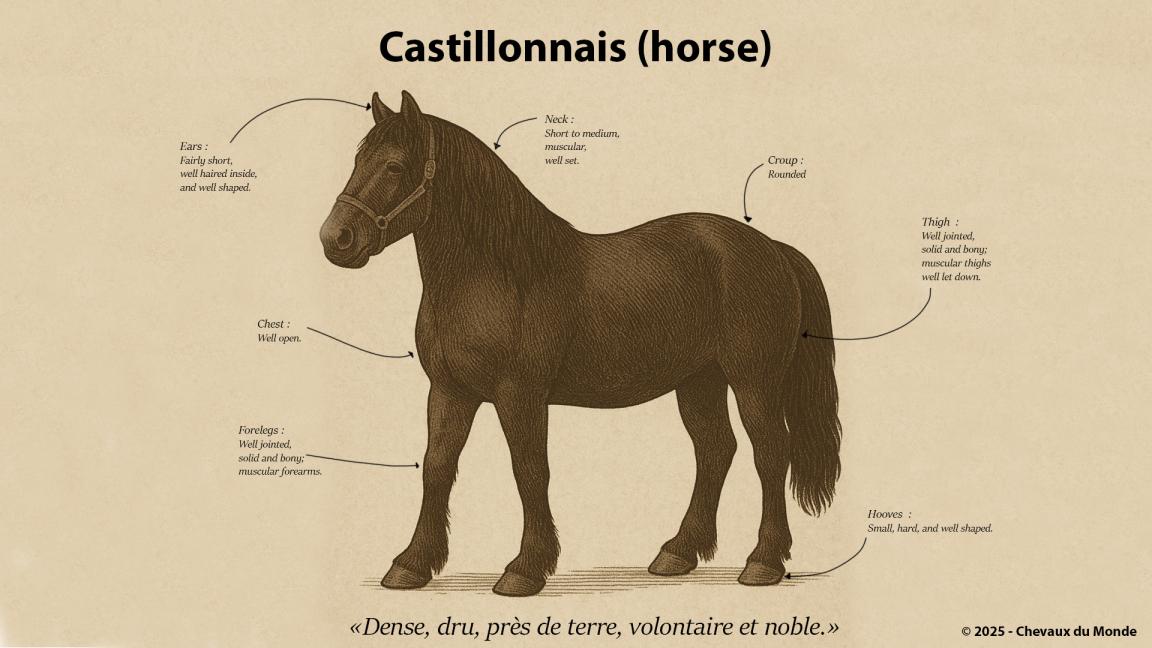
Horse Castillonnais - Illustration Standard of Breed